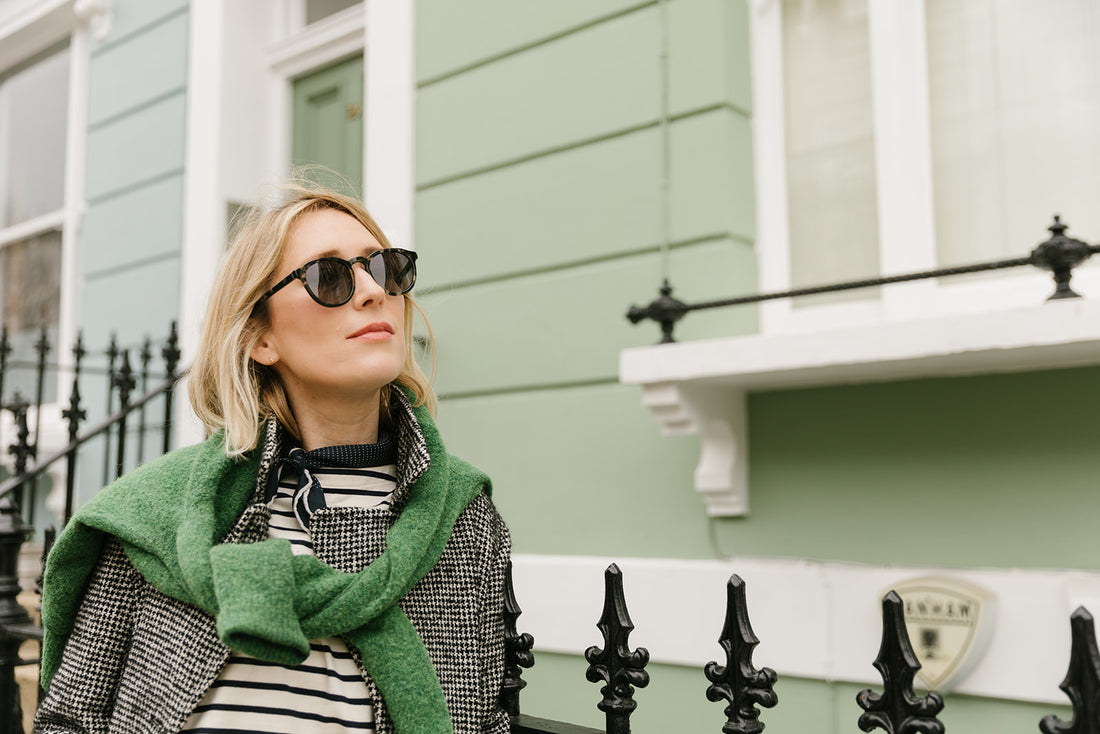What inspired you to create Pala Eyewear and focus on providing eyewear to those in need?
My initial spark stemmed from a desire to do something with my life that provided me a genuine sense of purpose. I was fascinated by brands such as Toms (Shoes) that put a social cause at the heart of their business and harboured the idea of one day doing the same when the time was right. Having travelled to Africa on a number of occasions and feeling a huge connection with the people, the culture and the beautiful wildlife, I wanted my impact to be there, whatever it looked like.
I learned that 10% of the world’s population are unable to access eye care, far more acute across Africa, and yet a pair of spectacles is recognised by the World Health Organisation as one of the most cost effective poverty alleviating tools you can give someone.
Vision is a fundamental human right, and everyone should have access to eyecare regardless of where they are born, so Pala was set up to be the vehicle to enable change through the sale of our eyewear.
What has been the most rewarding part of your work with Pala Eyewear?
There are a few! If I were to narrow it down, it has to be the trips to outreach projects in Zambia and Ethiopia and witnessing the moment when a person put on a pair of glasses for the first time. There is a strange kind of bewilderment initially as everything is brought into sharp focus, and then a truly wonderful smile at the understanding of how different their world has now become.
How has your mission statement evolved since you first started your brand?
The mission statement hasn’t strayed too far from the original, which was founded around the simple words of ‘Wear. Love. Give’. Those principles remain today, however the evolution to ‘see the world better’ feels a far broader reaching mission. Whether it be Pala as a business, our customers or people we interview, it’s about learning and sharing our solutions that improve the welfare of people and planet, no matter how small or large that improvement is.
What do you see as the biggest challenge in providing eyewear to those in need?
It’s ensuring the funding and financing ends up benefiting the end person and does not get intercepted along the way. We partner with Vision Action, a charity that does a lot of great work in central and Eastern Africa, working on the ground with local Government and NGOs to ensure the financing of vision centres and their outreach programmes is correctly distributed.
We fund their vision projects, with a focus on refurbishing and equipping vision centres, so it’s about long terms solutions. Our first project, a vision centre in Chinsali, Zambia, we refurbished in 2017 has seen more than 26,000 pass through since launched in 2017.

What do you think the future of Pala Eyewear looks like?
The future is bright, but we still have a long way to go – we are a small company and need to get a little more famous! The vision is to have funded 5 vision centres by 2030, which would mean more than 300,000 people benefitting from restored vision and all the economic empowerment that comes with that.
We have just moved into optical for the first time and will soon be launching a white label service for other companies so that they too can benefit from sourcing eyewear with all the ethical and sustainable credentials of Pala.
What advice would you give to someone looking to start a similar project?
Prepare for the long haul. It takes a long time to land your brand in the market; it’s incredibly competitive and you can rarely compete with the bigger players in the digital advertising space. You therefore have to be innovative and work on growing a loyal audience who will then become your advocates. Use your network, work on a strong and transparent supply chain and enjoy the ride as much as you can!
What have been the most meaningful moments for you during your work with Pala Eyewear?
There have been some nice award wins that have e-enforced the ambition of our work and becoming a B Corp in 2020 is a good example of that. However it is the little stories that are most meaningful. For one of our weavers we managed to get funds from one our stockists to buy her a bike after they heard of her 8-mile round trip to get water in the morning!
What do you think is the most important factor in creating sustainable change in Africa?
For Pala, without having a partner such as Vision Action to work with, we would not be able to create the change as dramatically as we have. So that relationship is a key one. I have also been to projects and visited out case weavers as I also feel it is important to connect with the communities we are working with and understand their needs beyond the business of Pala.
As an example and a fitting end to this question I urge you to take a look at this short video of Jib Hagan who we runs the weaving communities we work with in Bolgatanga and how his dream of recycling plastic waste is helping to provide a new found opportunity in light of climate change. By putting monetary value on using old water sachets and recycled black plastic, habit change is being created.


